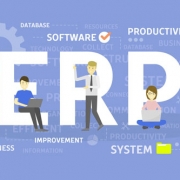Essential steps to maximize ERP project success
Enterprise resource planning (ERP) project failures can result in massive financial losses and leadership shakeups—yet executive oversight remains lacking in many initiatives. With most ERP efforts exceeding budget, it’s critical for the C-suite to take a more active, strategic role. From funding decisions to aligning priorities, executive leadership directly shapes project outcomes. In an article on CIO.com, post writer and tech expert Ted Rogers explores how poor oversight increases risks and outlines key areas where focused executive involvement can dramatically improve ERP success. ERP programs are major investments often backed at the highest levels, yet they continue to suffer from delays and cost overruns—sometimes exceeding 50%. A lack of executive oversight is a key contributor, leading to scope creep and inflated budgets. Perceived uniqueness of processes can further drive up costs. Organizations that fail to involve leadership early and consistently risk project failure. To counter this, executives must stay engaged across five critical areas to guide programs toward success.
- Financial Management: Executives must monitor spending, contingency usage, and shared financial forecasts to maintain budget control.
- Project Scope Management: Regular updates should show how scope changes affect both current budgets and long-term operational costs.
- Risk Management: Leadership should receive reports detailing critical risks, their likelihood, and planned mitigation strategies.
- Key Decisions: A running log of major decisions ensures alignment among executives, program managers, and vendors.
- Stakeholder Engagement: Executives need clear metrics and observations to assess how well stakeholders are involved throughout the project.




Leave a Reply
Want to join the discussion?Feel free to contribute!